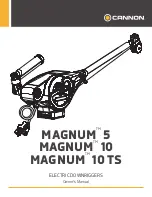
PEBCO®
DUSTLESS LOADING/SELF-CONTAINED DUSTLESS LOADING SPOUTS
GENERAL INSTALLATION
13
the fully extended position to ensure the cone assembly will hang straight.
16. Raise the outlet assembly until the outer flexible sleeve can be connected to the housing
assembly. Insert the top ring into the tub on the housing assembly and tighten the
retaining bolts.
NOTE
: It may be necessary to push the seal material in with a flathead screwdriver or similar
tool, as it has a tendency to bulge out of the tub.
17. Once the sleeve is secure, lower the assembly to the fully extended position. Connect
the sleeve to the outlet assembly, making sure there are no twists.
18. Raise and lower the spout several times to test the operation of the spout. If the outer
sleeve develops a twist, loosen the lower connection and straighten the sleeve while
extended. Make any necessary adjustments to the lift cable to level the outlet assembly.
19. If the DLS contains automatic-raise or level switches, they should be tested by manually
tilting the sensing probe. Make sure that this activates the spout motor or relays a signal
to the operator.
20. For SCDLS units, continue to
Section 4.3.3
NOTE:
After one week of service, it is recommended that a complete check of all
fasteners be made to ensure tightness.
4.3.3 Installation of Dust Collection Systems on SCDLS Units
1. Check all air tubing for any signs of damage, and tool check each connection to ensure
tightness. Connections are tightened at the factory, but can become loose during shipping.
2. Connect the Dust Collector Timer Controller to power according to the provided wiring
diagrams.
3. The air supplied to the dust collection system should be clean and dry, as moisture and
contaminants can severely damage the filters and valves.
4. Connect the air supply to the header. Headers should be pressurized at 70 to 80 psi; over-
pressurizing could cause the filters to fail. It is recommended that a cutoff valve be installed
immediately before the header for maintenance purposes.
NOTE
: Although each header contains an inlet for compressed air, it is only necessary to
connect the air supply to one header
4.3.4 SCDLS Fan Motor Burn-in Instructions
Before beginning the burn-in procedure, review the electrical connections to make sure the unit
has been wired properly. Check each connection for snugness and placement, and ensure that
overloads are properly set.
















































